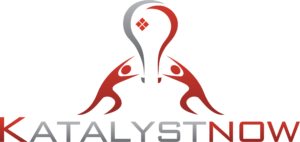LAAS? Seriously? Why not? We have Software as a Service (SaaS), Platform as a Service (PaaS), and in both cases, it’s about the quality of the service er, deliver-er…
In my last post (and an earlier version in LinkedIn), I shared a bit of an epiphany (for me at least): Teaching, training, educating is just a service – like pizza delivery. Educators (speaking for myself here) would do well to start with that frame, and to have a good think about how we can better provide our Learning as a Service…
The funny thing is, that habit of the “sage on the stage” dies hard, for both the teacher and the student. So, as a trainer, teacher, professor, educator, how can you accomplish this?
First things first: I’m talking about a change in perspective and attitude, rather than a pedagogical model for labs, lectures, or homework. There are plenty of people talking about that, and I’m probably not qualified to polish their shoes. So rather than “flipped classroom,” think “flipped perspective.”
One of the first things we can do to start with flipping that perspective is to “frame” things differently. Other articles on this blog will address, this, but the simplest place to start is by thinking of yourself as a facilitator, and the people paying for your service as participants, or even customers.
I believe I’ve earned the right to an opinion on setting perspective – but since my whole point to this epiphany was to stop thinking so arrogantly, or like the single source of all important information, I asked for help. Below are some core ideas I’ve gathered from other educators – ranging from K-12 teachers to technical and corporate trainers to professors – about delivering learning as a service…
- First and foremost: recognize the shift – the educator provides a service – how are you making this service worth it to your participants (repeat after me: if you don’t make it work for THEM, they will YouTubeItDude…)
- Like most services, your continued value depends on checking in frequently:
- Asking if participants are learning what they expected
- Asking if what they are learning will be valuable (and how? More on this in upcoming blog-post…)
- Asking what you can do to improve the service (speed up? slow down? use more examples? fewer?) – to meet their needs
- This applies for younger learners too: “would it help you more if we did an exercise or read this again?”
- Rather than just the end-of-class survey for training or professional development, the we should be checking with learners throughout – and adapting instruction or facilitation based on the results (my K-12 friends call this formative assessment)
- Keep in mind that facilitating Learning as a Service is about helping learners figure out what’s important in the field/discipline/area:
- Steer them towards the right resources and train them how to use those resources to continue learning after the class ends
- Help them evaluate resources and figure out which resources are LESS reliable or downright mis-leading
- Help them curate their knowledge, by encouraging them to discuss their ideas and examples, and then filtering out which ones fit the concepts they are learning (again, more on this in another post)
- Facilitate, Facilitate, Facilitate: help them organize their ideas, guide them through course content, check-in frequently with the participant/learners and the course objectives, and provide advice and guidance to get them back on track when they have drifted off.
Speaking of Facilitate: How can I get YOUR ideas here? Do you have any ways that YOU work to make your class or training more service based? Share them here in comments!
Next up: Looking at the “Class” as just one piece of the learning pie



